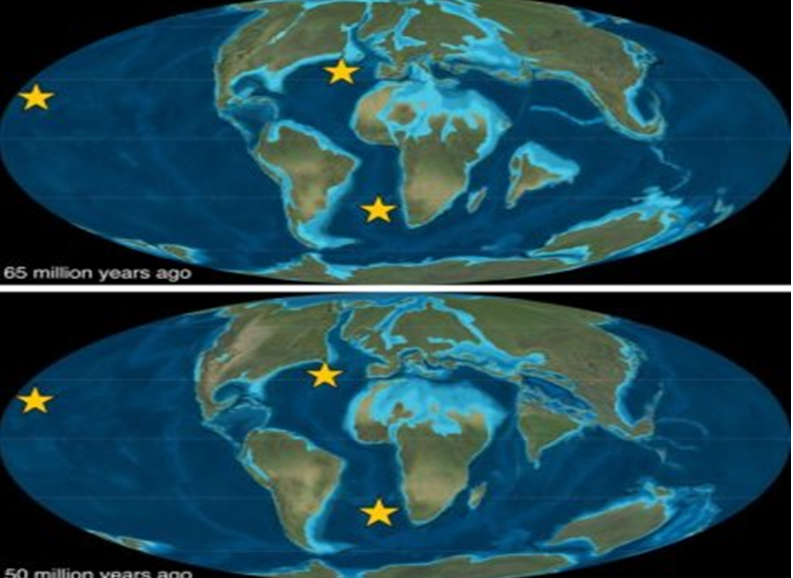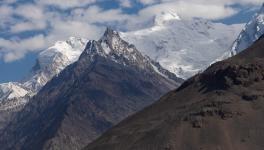Collision That the Himalayas Rise, Also Changed World’s Oceans and Conditions for Life

Image Courtesy: Science daily
It was 50 million years ago that a great collision between the Indian and the Eurasian tectonic plates shook the earth. The collision not only caused the demise of the Tethys Sea, it also caused the great Himalayas to rise. Now, scientists have identified that apart from changing the configuration of the continents, landscape and global climate, the ‘great collision’ caused oxygen in the world’s oceans to increase—altering the conditions for life.
The Princeton University group has published the research in Science recently. Emma Kast, a graduate student in geosciences and the lead author of the study was quoted to have said, “These results are different from anything people have previously seen. The magnitude of the reconstructed change took us by surprise.”
What scientists did
The team used microscopic seashells to record the ocean nitrogen over the period—70 million years ago, shortly before the extinction of the dinosaurs, to 30 million years ago. This is remarkable! In geoscience, getting records from a time far back is an extremely difficult task. For example, the fifty million years old rocks would not easily tell the secret stories hidden in them. The records the scientists obtained from the microscopic seashells would indeed be considered as fundamental data for the future.
Now the question arises that why out of everything did the scientists hunt for ocean nitrogen? Well, nitrogen is key to all lives on earth. The most abundant gas in the atmosphere of the planet is the essential element of DNA, the material that carries the genetic information of a species.
Every organism on Earth requires nitrogen, precisely, ‘fixed nitrogen’—sometimes also called the biologically available nitrogen. But only few organisms can convert the gas into biologically useful form. In oceans, one organism known as the cyanobacteria in surface waters does the nitrogen fixation to all other lives. When the cyanobacteria and other organisms in the ocean die and sink downward, they decompose.
Nitrogen is available in two isotopic forms—14N and 15N. When the oxygen level is poor, decomposition uses up fixed nitrogen. This happens with a preference to the lighter isotope, 14N. So the ratio of 15N to 14N in ocean water reflects its oxygen levels.
Tiny sea creature called the foraminifera incorporates this ratio while they are alive, and after their death it is preserved in their shells. It was their fossils that Emma Kast and her team relied upon to reconstruct the 14N to 15N ratio in the ancient ocean, thanks to the Ocean drilling program from the North Atlantic, North Pacific and South Atlantic. The reconstruction of the 14N to 15N ratio also made it possible to identify the changes in ocean oxygen in the ancient time.
When Kast’s team assembled the unprecedented geological data of ocean nitrogen, they found that in the 10 million years after the dinosaurs went extinct; the 15N to 14N ratio was high, suggesting that ocean oxygen levels were less during that period. They first thought that the warm climate prevalent then was the main reason. This is because in warmer water, oxygen level remains low. But another story emerged – this change – increase in the oxygen level – had occurred around 55 million years ago which was a period of continuous warm weather.
If not the global climate then what was it that caused the ocean oxygen and nitrogen cycling? The more likely player is the plate tectonics. The collision of India with Asia—known as the ‘collision that changed the world’ caused the demise of an ancient sea called the Tethys. This disturbed the continental shelves and their connections with the open oceans.
Over millions of years, tectonic changes have heavily impacted the ocean circulation worldwide, but the impact of climate change, by no means, can be discounted. “On timescales of years to millennia, climate has the upper hand over the change of ocean circulation,” said Daniel Sigman, another author of the study.
Get the latest reports & analysis with people's perspective on Protests, movements & deep analytical videos, discussions of the current affairs in your Telegram app. Subscribe to NewsClick's Telegram channel & get Real-Time updates on stories, as they get published on our website.
























